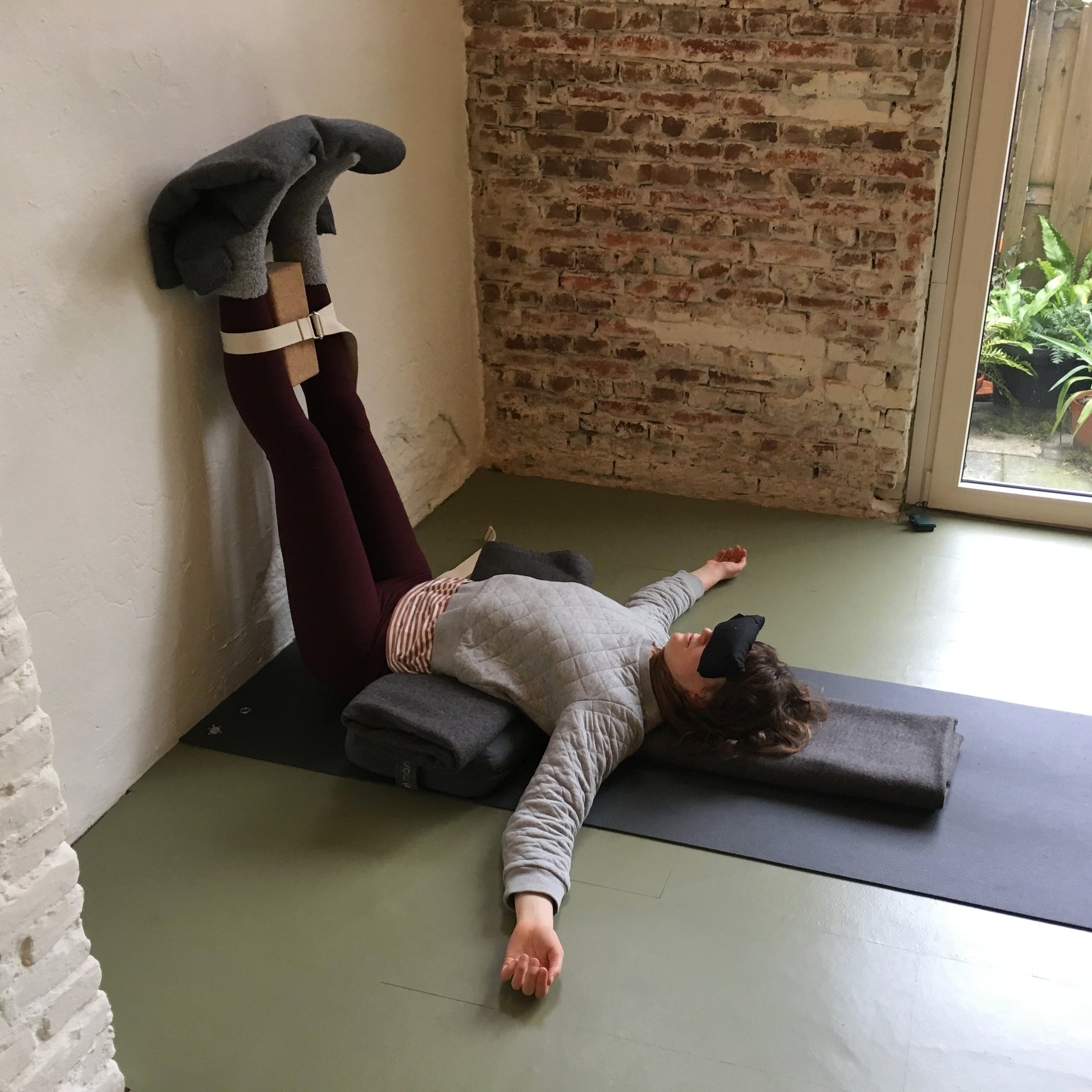We all need a bit of rest.
““I know you can do more, but can you do less?””
These words from my restorative yoga teacher, Lizzie Lasater, explain so much about the essence of this practice. So many of us are focused on self-improvement through progress we can physically measure – being better, faster, stronger (thanks, Daft Punk) – that we neglect the shadow side, the side that begs for a long exhale. If an inhale represents our active practice, restorative yoga is the complement: a deep breath out.
For the greater part of my life I’ve been battling a chronic health condition that, a number of years ago, had reached boiling point. It was then, when I could barely do a sun salutation, that I truly discovered restorative yoga and all its benefits. Defined as ‘the use of props to support the body in positions of ease and comfort, to facilitate relaxation and health’ (although I like to call it ‘cloud yoga’, since you really do feel like you’re lying on a cloud), restorative yoga is about opening, not stretching. The pose does you, rather than vice versa.
This may sound like restorative is a practice for the impaired: for those who physically can’t do more. But the goal is to move into parasympathetic dominance, something every body needs to function at its best. Sympathetic dominance – aka fight or flight mode – is a remnant from our cave-dwelling ancestors, who needed to stand their ground or run for cover when faced with predators. Now though, the stresses of modern life mean that many of us live with a perpetual adrenalin rush. It’s no wonder that everyone seems to know someone suffering from issues such as burn-out. In parasympathetic dominance, however, the body can work through slower processes – things like digestion and immunity. While each pose has physical benefits – helping to reduce pain, tension and fatigue; opening and stimulating specific organs; lowering blood pressure – the practice can also offer mental clarity, calmness and decreased anxiety.
So if all you’re doing is lying around on bolsters, why can’t you just sleep instead? The difference is that restorative yoga is conscious rest. Your mind is still awake – though moving deeper inwards – while your body is relaxed. We can still rise from a night’s sleep with aches and pains, realizing we’ve been unconsciously tensing our muscles. And in restorative, as in meditation, we can practise becoming the neutral observer of our minds, rather than letting them wander aimlessly into a dream state.
With today’s demanding schedules, it can be hard to carve out time for a practice where it seems, from the outside, like there’s not much happening. But we all need rest, and there’s so much more going on behind the scenes than what’s immediately obvious – trust me. Or better still, come and find out for yourself.
Love,
Tracey


